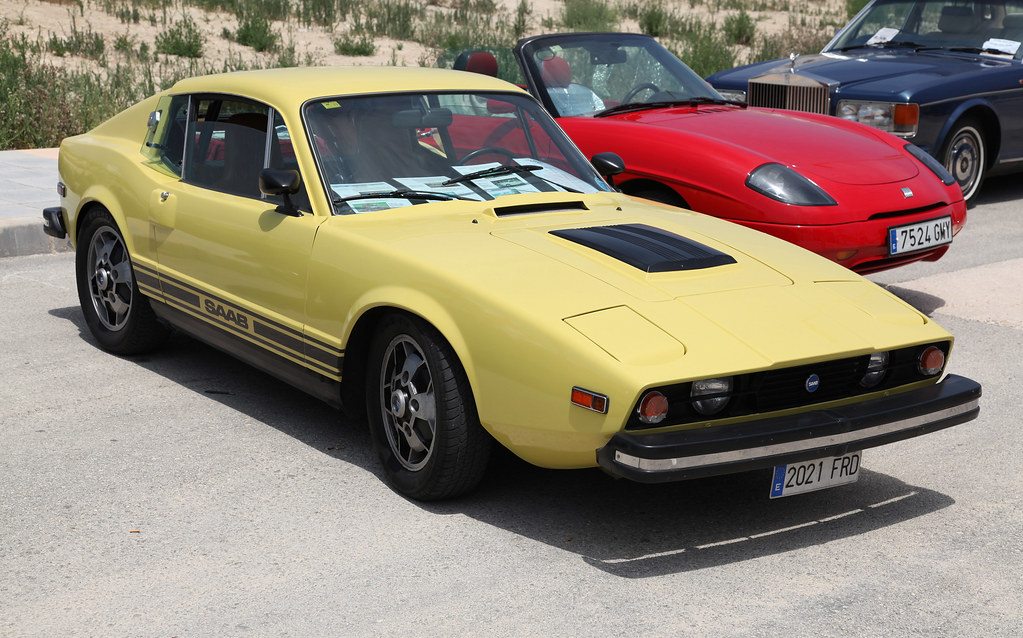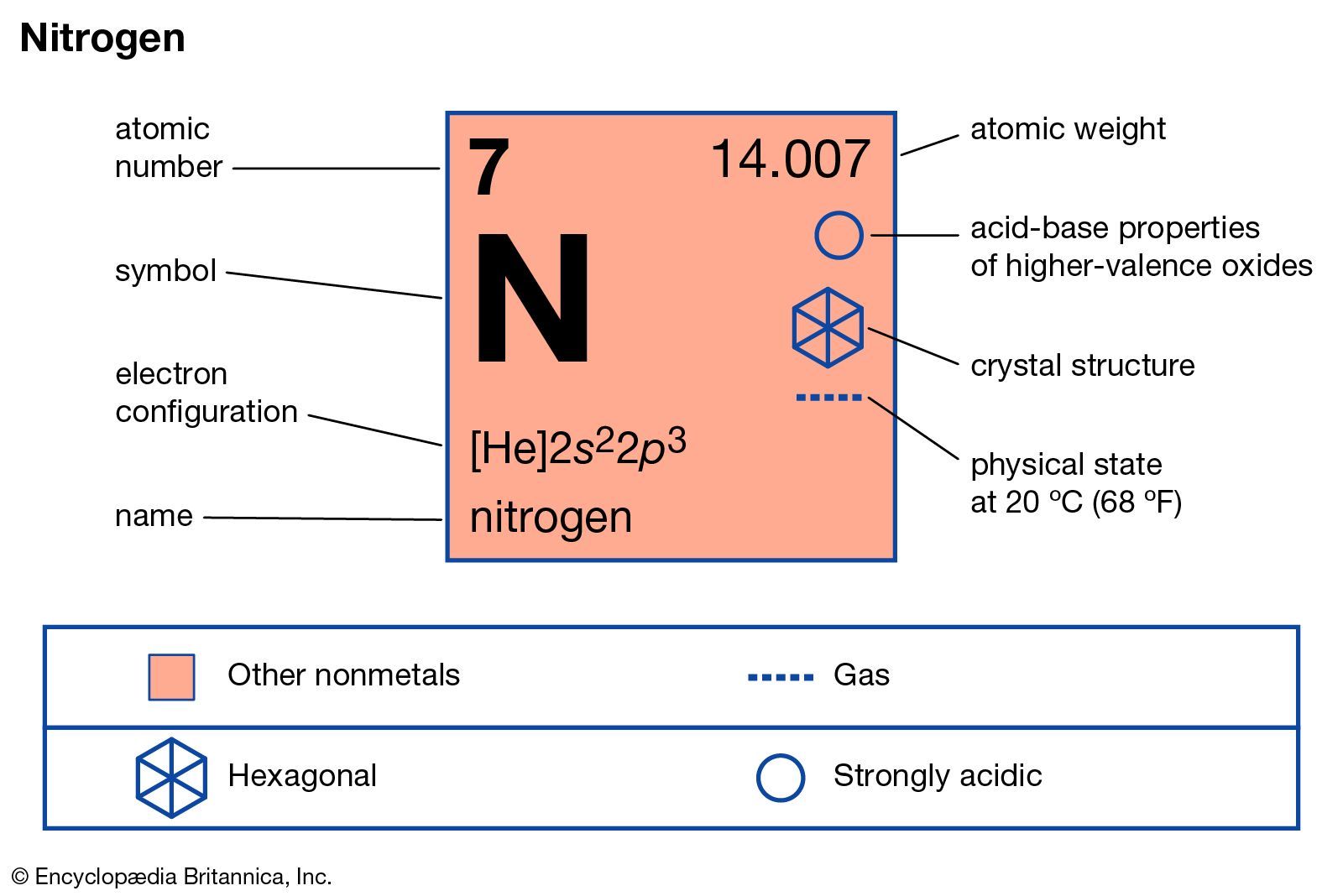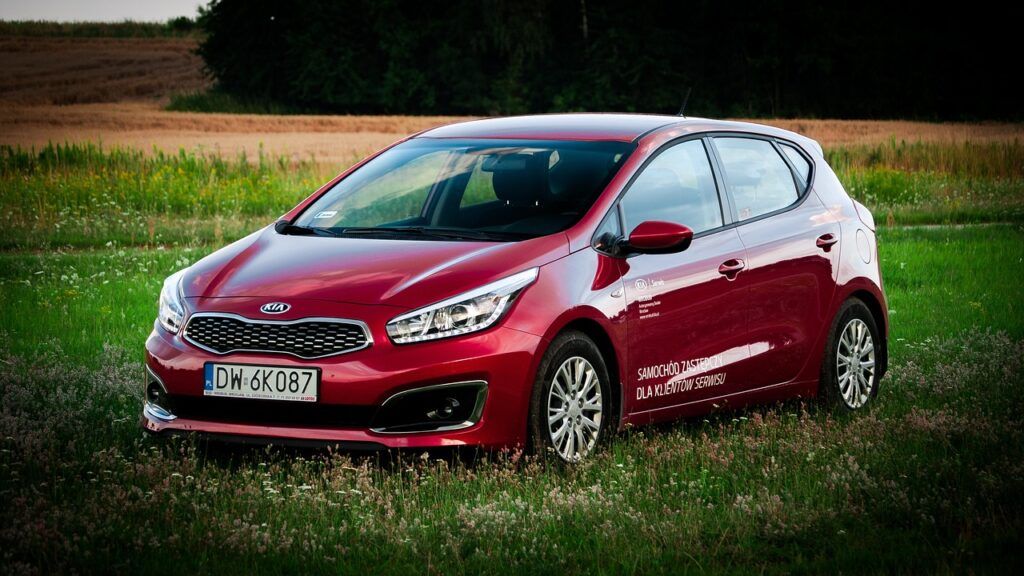
Let’s face it, buying a car can feel like falling in love. There’s that initial spark, the sleek lines, the promise of adventure, or perhaps the sheer practicality that just seems to *speak* to your soul. We spend tens of thousands of dollars, or commit to multi-year loans, all with the hope of a reliable companion on our daily journeys. But, oh boy, does that honeymoon period wear off fast for some unlucky souls. Sometimes, the dream ride turns into a full-blown nightmare, leaving owners stranded in a thick fog of buyer’s remorse.
It’s a brutal truth that vehicle manufacturers, despite their dazzling marketing and impressive specs, sometimes roll out cars that just don’t live up to the hype. Learning from the mistakes of others isn’t just a smart move; it’s practically essential in today’s market, where new and used cars demand serious coin. You don’t want to be the one stuck with a lemon, constantly questioning every decision you made on the dealership lot. Nobody wants to pay too much to choose too poorly.
So, buckle up, because we’re diving deep into the automotive purgatory. We’ve scoured the collective wisdom (and woes) of countless owners to bring you a no-holds-barred look at 15 vehicles that have left a trail of disappointment and regret. These aren’t just minor annoyances; these are full-blown, gut-wrenching regrets that have owners dreaming of a do-over. Let’s explore what went wrong, and why these machines often fall spectacularly short of expectations.
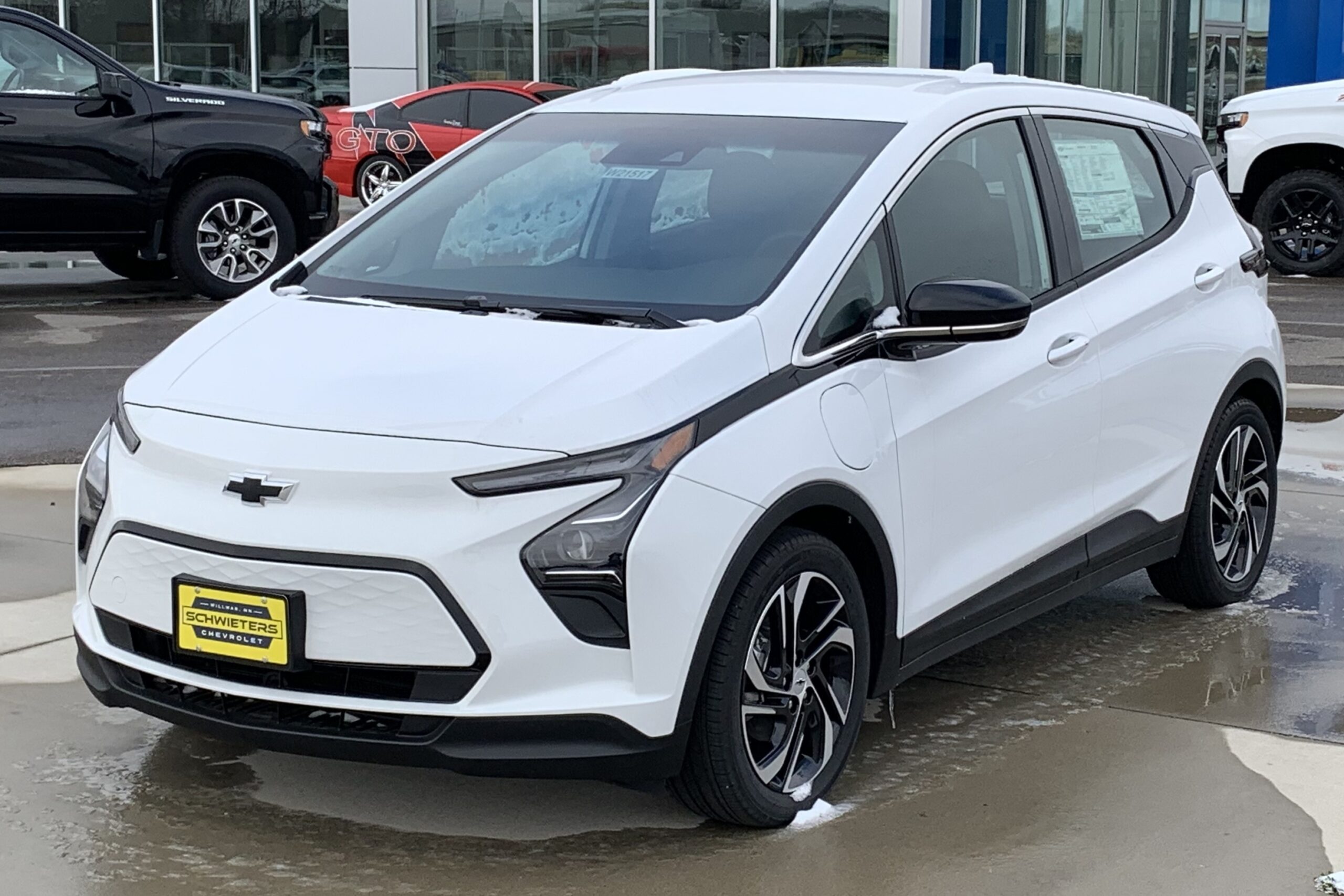
1. **Chevrolet Bolt** The Chevrolet Bolt, General Motors’ attempt at an affordable, respectable-range electric vehicle, initially garnered some praise. It seemed like a solid contender for the masses looking to dip their toes into the EV world without emptying their wallets. But alas, as is often the case in the automotive realm, initial impressions can be deceiving, and the Bolt quickly became plagued with a host of notorious problems that overshadowed its positive attributes.
The most infamous issue, without a doubt, revolved around its battery-related fires. These weren’t isolated incidents; they were significant enough to lead to massive recalls in both 2020 and 2021. The root cause? Faulty lithium-ion batteries manufactured by LG, which had a nasty habit of short-circuiting, overheating, and ultimately, igniting into flames. Imagine the anxiety of owning a vehicle that could spontaneously combust – that’s a level of regret no one signs up for.
Beyond the terrifying battery woes, owners also report a generally mediocre experience with the Bolt. Its ride quality is often described as merely “so-so,” lacking the refinement one might hope for. Rear passengers are left wanting for space, and the handling is far from inspiring. While affordability and range are certainly positives, the fundamental reliability and overall user experience leave much to be desired, making it a prime candidate for buyer’s remorse.
Car Model Information: 2022 Chevrolet Bolt EUV FWD LT
Name: Chevrolet Bolt EV
Caption: 2022 Chevrolet Bolt EV
Manufacturer: General Motors
Production: unbulleted list
ModelYears: unbulleted list
Class: Subcompact car
BodyStyle: hatchback
Layout: Front-engine, front-wheel-drive layout
Predecessor: Chevrolet Spark EV
Categories: 2020s cars, All Wikipedia articles in need of updating, All articles containing potentially dated statements, All articles with unsourced statements, Articles containing potentially dated statements from February 2018
Summary: The Chevrolet Bolt EV (marketed in Europe as Opel Ampera-e) is a battery electric subcompact hatchback manufactured and marketed by General Motors under its Chevrolet brand from late 2016 until late 2023, with a brief hiatus between mid-2021 and early 2022.
The first-generation Bolt was developed and manufactured with LG Corporation. Sales of the 2017 Bolt began in California in December 2016; it was released nationwide and international markets release in 2017. A rebadged European variant was marketed as the Opel Ampera-e in mainland Europe. In 2017, the Bolt was the second-best-selling plug-in car in the United States. It was named the 2017 Motor Trend Car of the Year, the 2017 North American Car of the Year, an Automobile magazine 2017 All Star, and was listed in Time magazine’s Best 25 Inventions of 2016. The Ampera-e was discontinued after 2018. By the end of 2020, GM had sold 112,000 Bolt and Ampera-e cars worldwide. The first-generation Bolt had been subject to at least three recalls due to battery fire risks.
In mid-2023, GM officials said they would discontinue the Bolt; after outcry, they announced plans for a next-generation model, which is expected to be revealed in 2025 for model year 2026.
Get more information about: Chevrolet Bolt
Buying a high-performing used car >>>
Brand: Chevrolet Model: Bolt
Price: $22,995 Mileage: 30,332 mi.
Read more about: Steer Clear: 15 Vehicles Drivers Have Regretted Purchasing Most
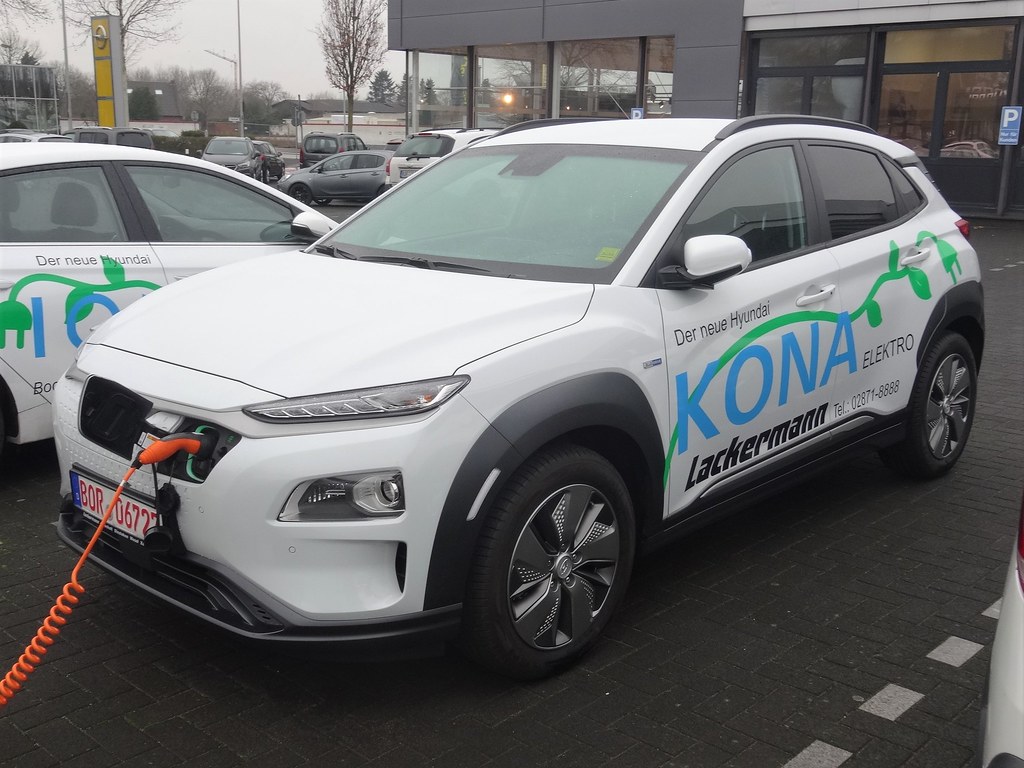
2. **Hyundai Kona Electric** Hoy, Hyundai has been on a serious roll with some genuinely interesting and well-received electric vehicles lately. They’ve been pushing boundaries and delivering some compelling packages. However, even the best teams have their off-days, and unfortunately, the Hyundai Kona Electric stands out as one of their more significant missteps, earning it a spot on our list of regrettable buys.
Much like the Chevrolet Bolt, battery fires and recalls are an unfortunate part of the Kona Electric’s history. Hyundai had to issue worldwide recalls in 2020 and 2021, all in an effort to “nip the fire risks in the bud” by replacing problematic battery packs. It’s a stark reminder that even with the best intentions, the bleeding edge of technology can sometimes cut a little too deep, leaving owners to deal with the aftermath of serious safety concerns.
But here’s the kicker: the battery issues, as significant as they are, are merely “the tip of the iceberg” when it comes to the Kona Electric’s drawbacks. Owners often face other undisclosed problems that chip away at the ownership experience. This leads us to a simple but crucial piece of advice for prospective buyers: buyer beware! The Kona Electric proves that even a seemingly promising EV can hide a multitude of sins that will leave you wishing you’d looked elsewhere.
Car Model Information: 2024 Genesis GV70 3.5T AWD Sport
Name: Hyundai Kona
Caption: Hyundai Kona N Line (SX2)
Manufacturer: Hyundai Motor Company
Aka: Hyundai Kauai (Portugal)
Production: 2017–present
ModelYears: 2018–present
Class: Subcompact crossover SUV
BodyStyle: SUV
Layout: ubl
Categories: 2020s cars, All-wheel-drive vehicles, All Wikipedia articles in need of updating, Articles containing Chinese-language text, Articles containing Korean-language text
Summary: The Hyundai Kona (Korean: 현대 코나) is a subcompact crossover SUV produced by the South Korean manufacturer Hyundai. The first-generation Kona debuted in June 2017 and the production version was revealed later that year. It is positioned between the Venue or Bayon and the Tucson in Hyundai crossover SUV line-up. The battery electric version called the Kona Electric (or Kona EV) was first launched in South Korea during the first half of 2018 and rolled out gradually worldwide afterwards.
Get more information about: Hyundai Kona
Buying a high-performing used car >>>
Brand: Hyundai Model: Kona Electric
Price: $46,888 Mileage: 12,479 mi.
Read more about: 10 SUVs That Hit 40 MPG Highway—And They’re Not Even Hybrids
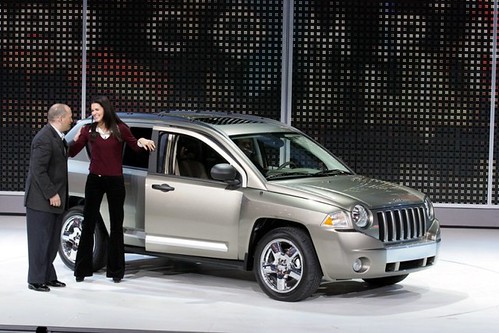
3. **Jeep Compass** The Jeep Compass, a compact SUV, might seem like a tempting proposition for those who desire the rugged spirit of Jeep in a smaller, more city-friendly package. But make no mistake, this vehicle has a serious track record of issues across various model years, and if you’re looking to avoid a full-blown “migraine headache on wheels,” you’d be wise to steer clear. This isn’t just about a few minor glitches; we’re talking about fundamental mechanical problems that can turn ownership into a perpetual frustration.
One of the most common complaints from owners zeroes in on the transmissions. Whether it’s the continuously variable transmission (CVT) or the 9-speed automatic, many drivers report herky-jerky shifting and, in some dire cases, catastrophic failure. Imagine your daily commute being marred by unpredictable gear changes, or worse, your transmission giving up the ghost entirely. That’s a surefire way to induce buyer’s remorse.
But the transmission isn’t the lone culprit. Owners also contend with poor engine performance, a frustrating lack of power or responsiveness that dulls the driving experience. Add to that excessive oil consumption, which is never a good sign, and a myriad of electrical system issues, and you’ve got a recipe for a truly regrettable purchase. The Compass, despite its brand heritage, often delivers far less reliability than its adventurous image suggests.
Car Model Information: 2017 Jeep Wrangler Unlimited Sport
Name: Jeep Compass
Caption: 2019 Jeep Compass
Manufacturer: Jeep
Production: 2006–present
ModelYears: 2007–present
Class: Compact crossover SUV
BodyStyle: SUV
Layout: Front-engine, front-wheel-drive layout
Chassis: Unibody
Categories: 2010s cars, 2020s cars, All-wheel-drive vehicles, All Wikipedia articles written in American English, Articles with short description
Summary: The Jeep Compass is a compact crossover SUV, introduced in 2006 for the 2007 model year. The first generation Compass and Patriot, its rebadged variant, were among Jeep’s first crossover SUVs. The second-generation Compass debuted in September 2016 in Brazil and at the Los Angeles International Auto Show in November 2016, sharing a modified platform with the Renegade. It is positioned between the smaller Renegade and the larger Cherokee globally or the Commander in South America. The third-generation Compass debuted in May 2025, built on the STLA Medium by Stellantis, shared with other PSA Groupe vehicles.
Get more information about: Jeep Compass
Buying a high-performing used car >>>
Brand: Jeep Model: Compass
Price: $20,725 Mileage: 111,103 mi.
Read more about: Beyond the Showroom Shine: 10 SUVs That Either Defy or Succumb to Rust, A Crucial Guide for Drivers
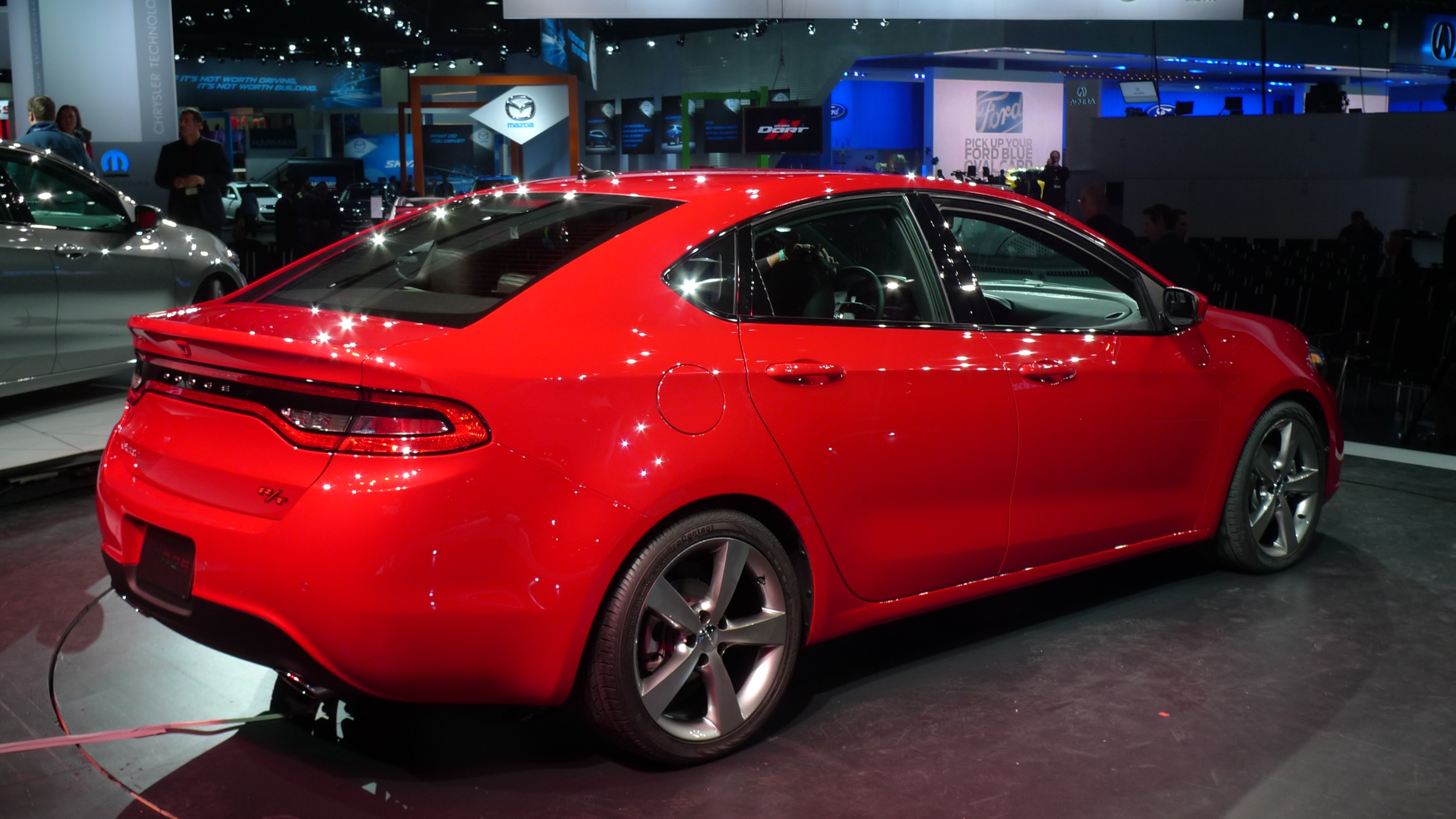
4. **Dodge Dart** The Dodge Dart, a compact sedan, was meant to inject some fresh life into Dodge’s car lineup. It offered a stylish exterior and a promise of modern practicality. However, what owners often discovered instead was a compact sedan burdened with what can only be described as “full-size car problems.” This isn’t about small quibbles; the Dart managed to disappoint owners across almost every major component, from the powertrain to the chassis.
Where do we even begin with the litany of issues? The transmission, the engine, the suspension, the brakes—you name it, and a significant number of Dart owners have likely had problems with it. These aren’t just minor inconveniences; they’re often serious reliability shortcomings that undermine the entire ownership experience. It’s the kind of car that constantly demands your attention, and not in a good way.
The sentiment among owners is clear: the Dodge Dart is a car many wish they had never bought. Consumer Reports backed this up, finding that around six in 10 buyers expressed dissatisfaction with the vehicle. That’s a staggering number, indicating widespread regret. When a majority of owners are unhappy, it’s a strong signal that something went fundamentally wrong in the design and manufacturing, making the Dart a poster child for automotive disappointment.
Car Model Information: 2013 Dodge Dart Limited/GT
Name: Dodge Dart
Caption: 1966 Dodge Dart GT 2-door hardtop
Manufacturer: Dodge
Production: 1959–1976 (US market)
ModelYears: 1960–1976 (US market)
Class: Full-size
Layout: FR layout
Predecessor: Dodge Coronet#Fourth generation (1957–1959)
Related: Plymouth Valiant,Chrysler Valiant,Dodge Phoenix
Successor: Dodge Aspen,Dodge Diplomat,Talbot Tagora
Categories: 1970s cars, All articles with unsourced statements, Articles with short description, Articles with unsourced statements from December 2023, Articles with unsourced statements from May 2025
Summary: The Dodge Dart is a line of passenger cars produced by Dodge from the 1959 to 1976 model years in North America, with production extended to later years in various other markets.
The production Dodge Dart was introduced as a lower-priced full-size model in 1960 and 1961, but became a mid-size car for one model year for 1962, and was then reduced to a compact for two generations, from 1963 to 1976.
Chrysler had first used ‘Dart’ name plates on two Italian styled show cars, in 1956 and 1957, before it became a Dodge model name. The Dart nameplate was resurrected for a Fiat-derived compact car that was introduced in 2012.
Get more information about: Dodge Dart
Buying a high-performing used car >>>
Brand: Dodge Model: Dart
Price: $6,971 Mileage: 123,411 mi.
Read more about: Steer Clear: 15 Vehicles Drivers Have Regretted Purchasing Most
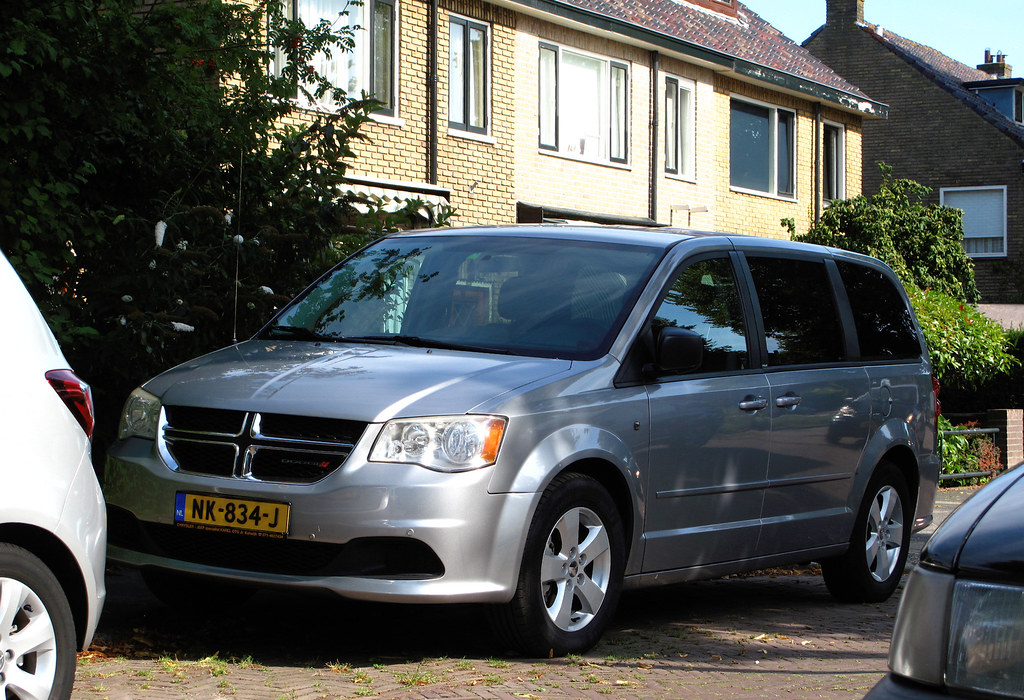
5. **Dodge Grand Caravan** Ah, the Dodge Grand Caravan. For many families, this minivan holds a special place in their memories, whether fond or, more often, not-so-fond, of countless road trips, school runs, and hauling duties. It’s been a staple in the minivan segment for decades, but don’t let nostalgia blind you to its significant flaws. The reality for many owners is that the Grand Caravan is anything but a smooth or reliable driving experience, leading to considerable regret.
When you rely on a vehicle to be a family, pet, and ‘thing’ hauler, dependability is paramount. Unfortunately, the Grand Caravan frequently falters in this crucial area. Transmission failure is an alarmingly common complaint from owners. Before these transmissions eventually go kaput, they often present a host of frustrating symptoms: delayed gear engagement, rough shifting, and slipping. These issues don’t just reduce comfort; they severely compromise safety and reliability.
But the transmission isn’t the only headache. Many owners also complain about persistent electrical system problems, which can manifest in a variety of unpredictable ways, and heavy oil consumption, which is both inconvenient and costly. If given the chance to rewind time and have a do-over, a significant number of Grand Caravan owners would gladly choose something—anything—else, underscoring just how deeply their buyer’s remorse runs.
Car Model Information: 2024 Mitsubishi Outlander ES 2.5 2WD
Caption: 2011 Dodge Grand Caravan Mainstreet
Name: Dodge Grand Caravan
Manufacturer: Chrysler Corporation,Daimler AG,Chrysler LLC,Chrysler Group LLC,FCA US LLC
Class: Minivan
Layout: FF layout,F4 layout
Production: November 2, 1983 –August 21, 2020
ModelYears: 1984–2020
Related: Plymouth Voyager,Chrysler Town & Country (minivan),Dodge Mini Ram,Chrysler Voyager,Volkswagen Routan
Assembly: Windsor, Ontario,Fenton, Missouri,Fenton, Missouri,Fuzhou
Successor: Dodge Journey,Chrysler Voyager
Categories: All-wheel-drive vehicles, All articles with unsourced statements, Articles with short description, Articles with unsourced statements from December 2017, Articles with unsourced statements from May 2009
Summary: The Dodge Caravan is a series of minivans manufactured by Chrysler from the 1984 through 2020 model years. The Dodge version of the Chrysler minivans, was marketed as both a passenger van and a cargo van (the only version of the model line offered in the latter configuration). For 1987, the model line was joined by the long-wheelbase Dodge Grand Caravan. Produced in five generations across 36 model years, the Dodge Caravan is the second longest-lived Dodge nameplate (exceeded only by the Dodge Charger). Initially marketed as the Dodge counterpart of the Plymouth Voyager, the Caravan was later slotted between the Voyager and the Chrysler Town & Country. Following the demise of Plymouth, the model line became the lowest-price Chrysler minivan, ultimately slotted below the Chrysler Pacifica.
Sold primarily in the United States and Canada, the Dodge Caravan was also marketed in Europe and other international markets under the Chrysler brand (as the Chrysler Voyager or Chrysler Caravan). From 2008 onward, Dodge marketed the model line only as the Grand Caravan; Ram Trucks sold a cargo-only version of the model line as the Ram C/V Tradesman. The model line was also rebranded as the Volkswagen Routan from 2009 through 2014.
After the 2020 model year, the Dodge Grand Caravan was discontinued, ending production on August 21, 2020. For 2021 production, the Grand Caravan nameplate was moved to Chrysler, which used it for a Canadian-market version of the Chrysler Pacifica (in the United States, the exact vehicle was marketed as the Chrysler Voyager).
For its entire production run, the Dodge Caravan/Grand Caravan was manufactured by Chrysler Canada (now Stellantis Canada) at its Windsor Assembly facility (Windsor, Ontario). From 1987 until 2007, the model line was also manufactured by Chrysler at its Saint Louis Assembly facility (Fenton, Missouri). Since their introduction in late 1983, over 14.6 million Chrysler minivans have been sold worldwide (including export versions and versions sold through rebranding).
Get more information about: Dodge Caravan
Buying a high-performing used car >>>
Brand: Dodge Model: Grand Caravan
Price: $24,961 Mileage: 26,190 mi.
Read more about: Steer Clear: 15 Vehicles Drivers Have Regretted Purchasing Most

6. **Nissan Sentra** The Nissan Sentra has seen its fair share of model years, and like most vehicles, some have been perfectly acceptable. However, certain iterations of the Sentra have been, to put it mildly, horrific, cementing its place on lists of cars that owners deeply regret. Specifically, if you’re in the market for a used compact, you’d be well-advised to “stay away from the ones made from 2013 to 2019.” This particular stretch of years represents a low point for the Sentra.
The primary thorn in the side of many Sentra owners from these model years has been the infamous continuously variable transmission (CVT). Nissan’s reliance on this transmission technology, while aiming for fuel efficiency, has often resulted in a compromised driving experience and significant reliability concerns. Problems range from overheating and jerky acceleration to unsettling shuddering, making the daily drive anything but smooth or predictable.
And the laundry list of issues doesn’t stop at the transmission. Engine stalling has also been reported by owners, which is a critical safety concern and a major frustration. Furthermore, there have been numerous recalls related to essential safety components like airbags, seatbelts, and brakes. This combination of powertrain problems and safety-related recalls paints a grim picture for these Sentra models, explaining why so many owners wish they could undo their purchase.
Car Model Information: 2021 Nissan Sentra SV
Name: Nissan Sentra
Caption: 2021 Nissan Sentra SR (B18; Canada)
Manufacturer: Nissan
Aka: Nissan Sunny
Production: 1982–present
Class: Subcompact car
Predecessor: Nissan Sunny#B310
Categories: 1990s cars, 2000s cars, 2010s cars, 2020s cars, All Wikipedia articles written in American English
Summary: The Nissan Sentra is a series of automobiles manufactured by the Japanese automaker Nissan since 1982. Since 1999, the Sentra has been categorized as a compact car, while previously it occupied the subcompact class. Until 2006, Sentra was a rebadged export version of the Japanese Nissan Sunny, but since the 2013 model year, Sentra is a rebadged export version of the Sylphy. The Sentra nameplate is not used in Japan. Many other countries in Latin America sell their versions of the Sunny as the Sentra. In Mexico, the first three generations of the Sentra were known as the Nissan Tsuru (Japanese for crane), and the B13 model was sold under that name until 2017, alongside the updated models badged as Sentra.
In North America, the Sentra currently serves as Nissan’s compact car, despite being rated as a mid-size car by the EPA due to its interior volume since the 2007 model year. While previous Sentras were subcompacts, the Sentra has grown over the years, with the Nissan Versa having replaced the Sentra in the entry-level area.
The Sentra name was created for Nissan by Ira Bachrach of NameLab, and Bachrach describes the origin as “Nissan wanted consumers to understand that it was quite safe even though it was small. The word Sentra sounds like central as well as sentry, which evokes images of safety.”
Get more information about: Nissan Sentra
Buying a high-performing used car >>>
Brand: Nissan Model: Sentra
Price: $17,961 Mileage: 63,553 mi.
Read more about: Steer Clear: 15 Vehicles Drivers Have Regretted Purchasing Most
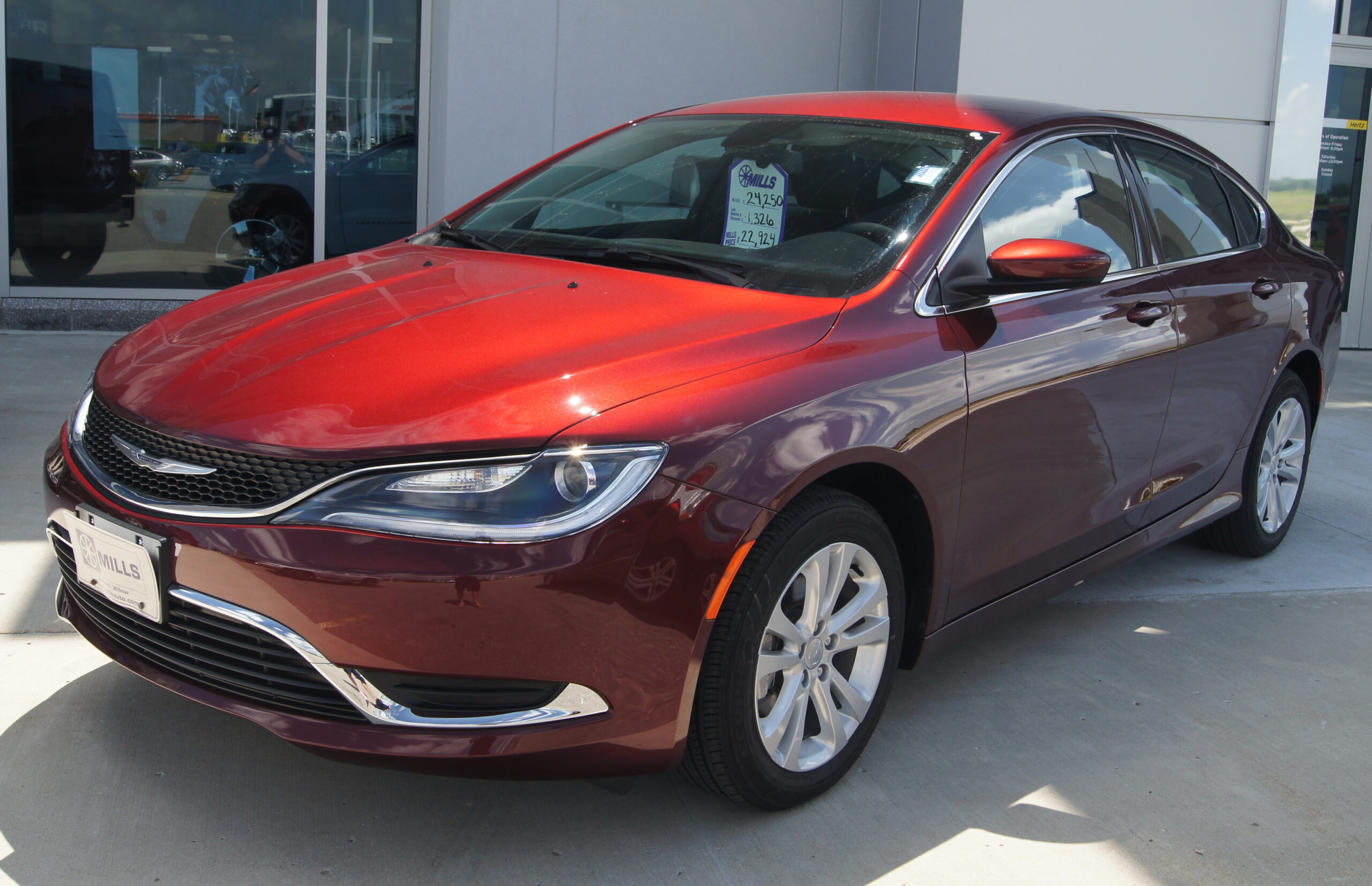
7. **Chrysler 200** Ah, the Chrysler 200. Manufactured between 2011 and 2017, this sedan aimed to be a more upscale and competitive offering from Chrysler. However, its tenure in the market was unfortunately marked by a host of reliability issues that quickly soured the ownership experience for many. It consistently appears on lists of vehicles that simply failed to deliver on their promise, becoming a source of considerable frustration for its buyers.
Owners of the later models, specifically the 2015, 2016, and 2017 versions, found the 9-speed automatic transmission to be particularly problematic. This wasn’t just about quirky shifts; transmission failure became a significant ‘thing,’ as the context puts it, for these cars. Imagine buying a relatively new vehicle only to face such a critical and expensive component failure—it’s enough to make anyone second-guess their decision.
Beyond the transmission troubles, the Chrysler 200 also suffered from engine performance problems. These issues could manifest as a lack of power, rough running, or other mechanical headaches that undermine confidence and enjoyment. When a vehicle struggles with both its transmission and engine, it’s a clear signal that fundamental reliability is compromised, leading to a widespread feeling of regret among those who took a chance on the Chrysler 200.
Car Model Information: 2015 Chrysler 200 S
Name: Chrysler 200
Manufacturer: Chrysler
Production: 2010–2016
ModelYears: 2011–2017
Assembly: Sterling Heights, Michigan
Class: Mid-size car
Sp: us
Predecessor: Chrysler Sebring
Categories: 2010s cars, All articles with dead external links, All articles with unsourced statements, Articles with dead external links from July 2020, Articles with permanently dead external links
Summary: The Chrysler 200 is a mid-size sedan that was manufactured and marketed by Chrysler from model years 2011 to 2017 across two generations in four-door sedan and two-door convertible (first generation only) body styles.
The 200 nameplate debuted on the 200C, a prototype hybrid vehicle shown at the 2009 North American International Auto Show in Detroit and based on the Chrysler 300. The 200C concept was engineered to accept either traditional gasoline, hybrid or full-electric powertrains.
Get more information about: Chrysler 200
Buying a high-performing used car >>>
Brand: Chrysler Model: 200
Price: $6,900 Mileage: 122,275 mi.
Read more about: Conquer the Open Road: 13 Hybrid Vehicles Delivering Over 600 Miles of Range for Unmatched Freedom

8. **Nissan Altima** It seems Nissan has a knack for making repeat appearances on lists of cars that owners deeply regret purchasing, and the Nissan Altima is no exception. This popular sedan, often chosen for its practicality and perceived value, has unfortunately become another prime example of how a problematic transmission can torpedo the entire ownership experience. For many, the Altima represents a decision they’d love to rewind and rectify.
The chief culprit, once again, is the continuously variable transmission (CVT). While intended to offer smooth power delivery and fuel efficiency, Nissan’s implementation in the Altima, particularly in the 2013 to 2019 model years, proved to be notoriously unreliable. These CVTs were plagued with issues that often led to expensive repairs or even complete replacement, costing owners a significant chunk of change and a lot of headaches.
But the Altima’s troubles aren’t solely confined to its transmission. Owners also report issues with the steering system, which can compromise handling and safety. Excessive oil consumption and oil leaks are other common complaints, indicating deeper engine issues that can lead to costly maintenance and a shortened lifespan for the vehicle. These cumulative problems ensure that many Nissan Altima owners would unequivocally choose a different path if given the opportunity to buy again.
Car Model Information: 2024 Nissan Altima 2.5 SL
Name: Nissan Altima
Caption: 2024 Nissan Altima SR (L34; US)
Manufacturer: Nissan
Aka: Nissan Bluebird
Production: 1992–present
Class: Compact car
Predecessor: Nissan Bluebird,Nissan Stanza
ModelYears: 1993–present
Categories: 2000s cars, 2010s cars, 2020s cars, All-wheel-drive vehicles, All Wikipedia articles written in American English
Summary: The Nissan Altima is a mid-size car manufactured by Nissan since 1992. It is a continuation of the Nissan Bluebird line, which began in 1955.
The Altima has historically been larger, more powerful, and more luxurious than the Nissan Sentra but less so than the Nissan Maxima. The first through fourth-generation cars were manufactured exclusively in the United States and officially sold in North and South America, along with the Middle East and Australia. For other markets, Nissan sold a related mid-size sedan called the Nissan Teana which was between the Altima and Maxima in terms of size. In 2013, the Teana became a rebadged version of the fifth-generation Altima.
The name “Altima” was originally applied to a top trim line of the Nissan Leopard for the Japanese market in 1986, and then to the Nissan Laurel Altima mid-size car sold in Central America and the Caribbean before 1992. In 1992, Nissan discontinued the Stanza which was a Nissan Bluebird clone, replacing it with the US-built Altima, while remaining a compact car. The first Altima was produced in June 1992, as a 1993 model. All Altima models for the North American market were built in Smyrna, Tennessee, until June 2004, when Nissan’s Canton, Mississippi plant also began producing the model to meet high demand.
Get more information about: Nissan Altima
Buying a high-performing used car >>>
Brand: Nissan Model: Altima
Price: $23,998 Mileage: 34,897 mi.
Read more about: Steer Clear: 15 Vehicles Drivers Have Regretted Purchasing Most
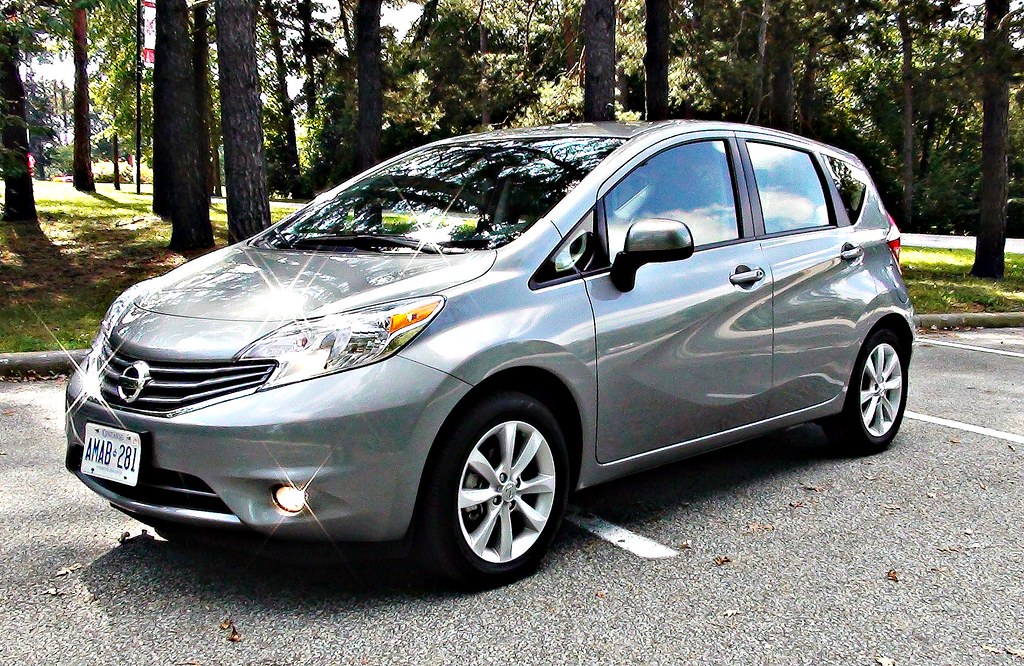
9. **Nissan Versa Note** Sometimes, a deal looks too good to be true, and with the Nissan Versa Note, that suspicion often turns into a harsh reality. While this small hatchback certainly boasts a super-cheap price tag, owners quickly discover that its low cost is, unfortunately, a direct reflection of its underlying quality. It’s a classic case of getting exactly what you pay for, and in this instance, that often means a whole lot of disappointment down the road.
Chief among the frustrations for Nissan Versa Note owners is, you guessed it, the continuously variable transmission (CVT). Nissan’s reliance on this technology has become a recurring theme in our regret-filled journey, and the Versa Note is no exception. Owners report that this transmission, far from delivering a smooth and efficient ride, often frustrates them to no end with its inconsistent performance and reliability woes. It’s a shame when a car’s primary mechanical component actively detracts from the driving experience.
And as if a problematic transmission wasn’t enough, the Versa Note also punishes drivers with truly anemic acceleration, courtesy of its 1.6-liter 4-cylinder engine. Merging onto highways becomes an exercise in patience and prayer, and passing slower traffic feels like an impossible dream. This combination of a frustrating CVT and a thoroughly underpowered engine ensures that the initial allure of a cheap price quickly dissipates, leaving owners with little more than a strong desire to trade it in immediately.
Car Model Information: 2024 Chevrolet Silverado 1500 RST
Name: Nissan Note
Manufacturer: Nissan
Production: 2004–present
Class: Mini MPV
BodyStyle: hatchback
Layout: Front-engine, front-wheel-drive layout,Front-engine, four-wheel-drive layout
Predecessor: Nissan Almera Tino
Aka: Nissan Versa
Caption: Nissan Note (E13)
Categories: 2010s cars, 2020s cars, All-wheel-drive vehicles, All articles containing potentially dated statements, All articles needing rewrite
Summary: The Nissan Note (Japanese: 日産・ノート, Hepburn: Nissan Nōto) is a supermini/subcompact hatchback or a mini MPV manufactured and marketed globally by Nissan. Introduced in 2004, the first-generation Note was primarily marketed in Japan and Europe, and was produced in Japan and the United Kingdom. The second-generation model was sold in other regions, including North America where it was manufactured in Mexico and marketed as the Versa Note, and Thailand, where it serves as one of the B-segment hatchback offered by the brand alongside the smaller March/Micra under the Eco Car tax scheme.
In 2017, the second-generation Note was replaced by the French-built K14 Micra for the European market. The Versa Note was discontinued in North America in 2019 due to the decreasing demand for subcompact hatchbacks in the region. It continued to be produced and sold in Japan up to the introduction of the third-generation Note in late 2020.
The Note was introduced with a series hybrid drivetrain in late 2016 as the Note e-Power. Due to its popularity and the push of electrification, the third-generation Note is only available with the e-Power drivetrain, with a WLTC fuel economy of 29.5 kilometres per litre (69 mpg‑US).
Get more information about: Nissan Note
Buying a high-performing used car >>>
Brand: Nissan Model: Versa Note
Price: $46,299 Mileage: 18,181 mi.
Read more about: Conquer the Open Road: 13 Hybrid Vehicles Delivering Over 600 Miles of Range for Unmatched Freedom
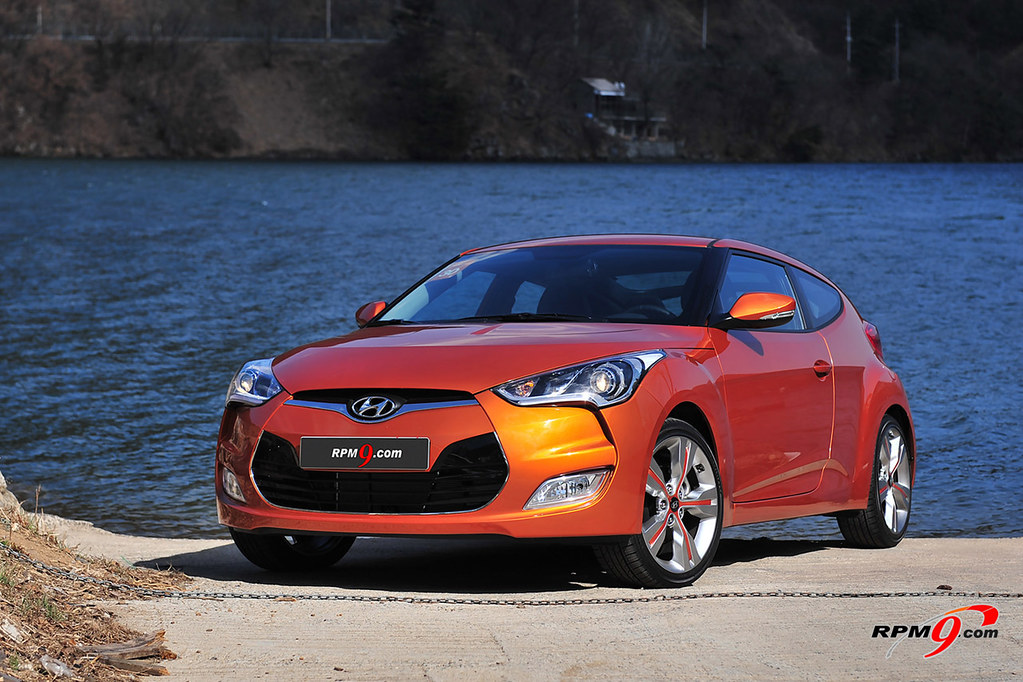
10. **Hyundai Veloster** Now, let’s talk about a car that truly stands out from the crowd, at least aesthetically: the Hyundai Veloster. With its distinctive styling, intriguing three-door configuration, and what initially promised responsive handling, it looked like a genuinely cool car, a breath of fresh air in a sea of automotive sameness. However, beneath that quirky and appealing exterior, there lurked a host of problems that, for many owners, became simply impossible to ignore, transforming a cool ride into a regrettable one.
The most alarming of these issues often centered around the engine. Reports from Veloster owners frequently detail serious engine problems that, in the most dire of circumstances, could lead to catastrophic failure. Imagine the dread of driving a vehicle known for potentially having its heart give out without warning. That kind of fundamental reliability concern is enough to make anyone second-guess their purchase, regardless of how good the car looks in the driveway.
Adding to the mechanical misery, the Veloster’s dual-clutch transmission also presented its own set of headaches. Owners grappled with issues like noticeable delayed acceleration, a jarring sensation of slipping gears, and frustratingly jerky shifts. These aren’t minor quirks; they fundamentally degrade the driving experience, turning what should be an engaging ride into a chore. And if that wasn’t enough to push owners over the edge, the Veloster also reportedly suffered from persistent suspension and steering problems, completing a trifecta of disappointment that makes its initial cool factor quickly fade.
Car Model Information: 2012 Hyundai Veloster Base
Name: Hyundai Veloster
Manufacturer: Hyundai Motor Company
Production: 2011–2022
Class: Sport compact car
Layout: Front-engine, front-wheel-drive layout
BodyStyle: hatchback
Predecessor: Hyundai Tiburon
ModelYears: 2012–2022
Assembly: Ulsan
Categories: All Wikipedia articles in need of updating, All articles with unsourced statements, Articles containing Korean-language text, Articles with short description, Articles with unsourced statements from May 2018
Summary: The Hyundai Veloster (Korean: 현대 벨로스터, romanized: Hyeondae Belloseuteo) is a compact car first produced in 2011 by Hyundai, with sales beginning in South Korea on March 10, 2011, and in Canada and the United States since the fall of 2011. In South Korea, it was marketed under Hyundai’s ‘Premium Youth Lab’. It was unveiled on January 10, 2011, at the Detroit Auto Show, and fills the void left when Hyundai discontinued the Hyundai Tiburon after the 2008 model year.
The car differs from most other hatchbacks with its asymmetrical door configuration, featuring one large door on the driver side and two smaller doors on the passenger side. This configuration is more common on commercial vehicles and minivans.
Get more information about: Hyundai Veloster
Buying a high-performing used car >>>
Brand: Hyundai Model: Veloster
Price: $7,950 Mileage: 83,462 mi.
Read more about: Steer Clear: 15 Vehicles Drivers Have Regretted Purchasing Most
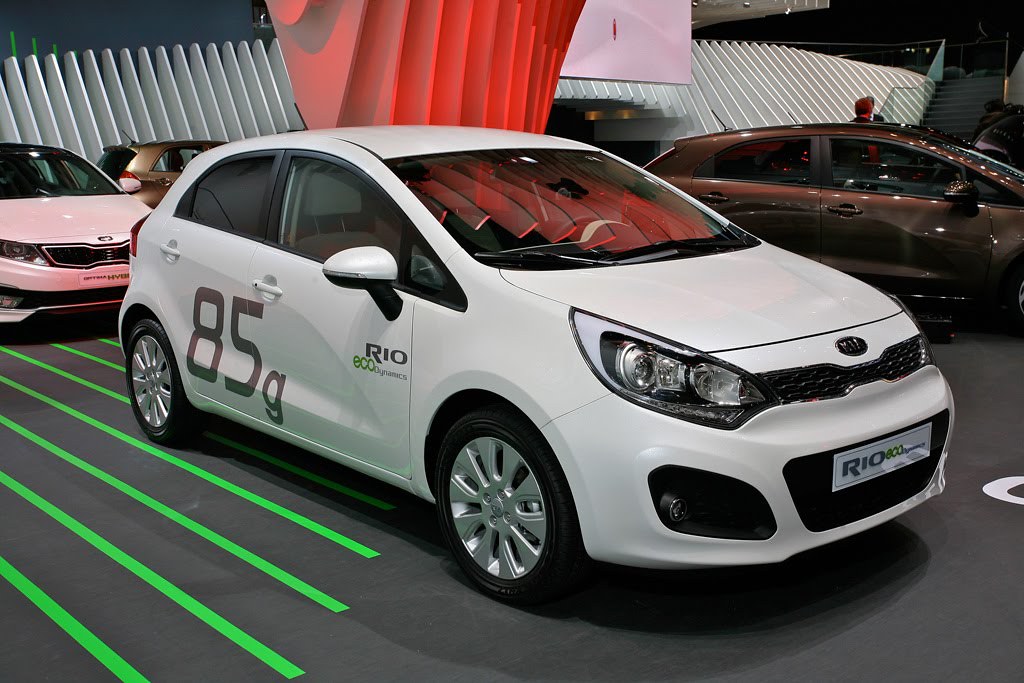
11. **Kia Rio** Ah, the Kia Rio. It’s long been a champion of affordability and efficiency, a go-to for buyers seeking a no-frills, economical ride. And on paper, that sounds great! But for a significant number of owners, the reality of living with a Kia Rio has unfortunately led to their fair share of buyer’s remorse. While it might save you a few bucks at the pump and on the purchase price, the trade-offs in other critical areas can make it a purchase many wish they could undo.
One of the most frequent and aggravating complaints from Rio owners revolves around its engine issues. We’re not talking about minor hiccups here; owners report significant problems like rough idling and persistent misfires. These issues are typically traced back to faults with crucial components such as the spark plugs or ignition coils, indicating a deeper reliability concern that can quickly become both costly and inconvenient to address. A car that can’t run smoothly is a constant source of irritation, no matter how cheap it was to buy.
Beyond the engine bay, owners also voice considerable dissatisfaction with the overall interior quality. Many describe it as simply “cheap,” lacking the kind of comfort and refinement one might expect even from an affordable vehicle. This translates into an uncomfortable daily commute and a general feeling that the car just isn’t built to last or to provide a pleasant environment for its occupants. When affordability comes at the expense of both mechanical dependability and basic comfort, the Kia Rio quickly earns its spot on the regrettable list.
Car Model Information: 2023 Kia Rio S
Name: Kia Rio
Caption: Fourth generation Kia Rio
Manufacturer: Kia
Aka: Kia Pride (2005–2017),Kia K2 (China; 2011–2020)
Production: November 1999 – December 2023
ModelYears: 2001–2023 (North America)
BodyStyle: hatchback
Class: Subcompact car
Layout: Front-engine, front-wheel-drive layout
Predecessor: Kia Pride,Kia Avella
Successor: Kia K3 (BL7)
Categories: 2000s cars, 2010s cars, Articles containing Korean-language text, Articles with short description, CS1 Croatian-language sources (hr)
Summary: The Kia Rio (Korean: 기아 리오) is a subcompact car manufactured by Kia from 1999 to 2023. Body styles have included a three and five-door hatchback and four-door sedan, equipped with inline-four gasoline and diesel engines, and front-wheel drive.
The Rio replaced the first generation Pride—a rebadged version of the Ford Festiva—and the Avella, a subcompact sold as a Ford in some markets. A second generation was introduced in 2005 in Europe and in 2006 in North America, sharing its platform with the Hyundai Accent, a subcompact manufactured by its sister Hyundai Motor Company in South Korea.
In August 2023, the K3 was introduced as its successor in several markets such as Mexico and the GCC countries.
Get more information about: Kia Rio
Buying a high-performing used car >>>
Brand: Kia Model: Rio
Price: $16,949 Mileage: 22,509 mi.
Read more about: Conquer the Open Road: 13 Hybrid Vehicles Delivering Over 600 Miles of Range for Unmatched Freedom
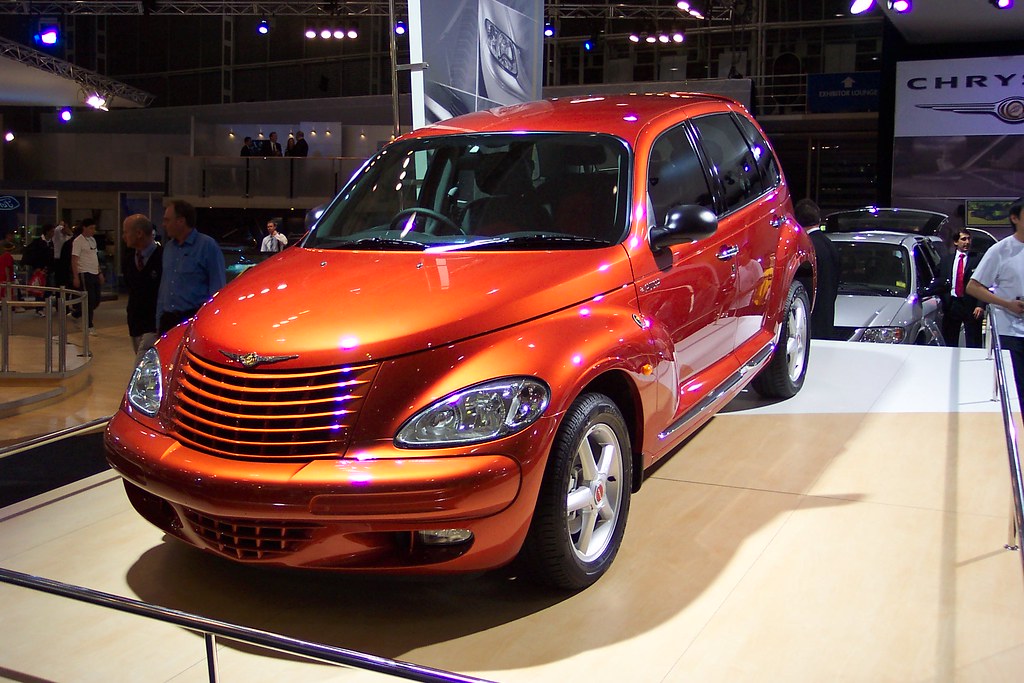
12. **Chrysler PT Cruiser** Where do we even begin with the Chrysler PT Cruiser? This compact car was a true head-turner upon its release, but not always for the right reasons. Its distinctive retro styling was a polarizing force: people either loved it, or more often, loved to hate it. But let’s be clear, the looks – however you felt about them – were far from the only things that went wrong with this vehicle, and they certainly weren’t the cause of the deep regret many owners still harbor.
Underneath that unique sheet metal, the PT Cruiser was plagued by engine issues galore. We’re talking about a full spectrum of mechanical maladies, ranging from frustrating stalling and rough idling to more severe problems like persistent overheating and even catastrophic head gasket failure. These aren’t just minor inconveniences; they’re fundamental flaws that can turn daily driving into a nerve-wracking gamble and ownership into a never-ending cycle of expensive repairs.
And the misery didn’t stop at the engine. Owners also grappled with a host of transmission and electrical problems, among other things, that collectively undermined any shred of reliability the car might have hoped to possess. When your vehicle consistently suffers from multiple critical system failures, it’s a surefire recipe for regret. The Chrysler PT Cruiser stands as a testament to how poor engineering and persistent mechanical woes can overshadow even the most unique design, leaving owners with little but a desire for a do-over.
Car Model Information: 2024 Chevrolet Silverado 1500 RST
Name: Chrysler PT Cruiser
Manufacturer: Chrysler
ModelCode: PT,PG
Production: 2000–2010
ModelYears: 2001–2010
Assembly: Toluca, Mexico State
Designer: Bryan Nesbitt
Class: Compact car
BodyStyle: convertible
Platform: Chrysler PT platform
Related: Dodge SRT4,Dodge Neon
Predecessor: Dodge Neon
Successor: Lancia Delta#Third generation
Layout: Front-engine, front-wheel-drive layout
Engine: ubl
Transmission: Ultradrive#40TE
Wheelbase: 103 in
Abbr: on
Length: 168.8 in
Width: 67.1 in
Height: 63 in
Weight: 3123 lb
Categories: 2010s cars, All articles with unsourced statements, Articles with short description, Articles with unsourced statements from March 2018, Cars discontinued in 2010
Summary: The Chrysler PT Cruiser is a compact car that was built by the American company Chrysler from 2001 until 2010. Introduced as a five-door hatchback wagon, a two-door convertible variant was also made from 2005 until 2008.
Originally planned as a Plymouth model, the PT Cruiser was ultimately marketed as a Chrysler when Plymouth was discontinued. Intended to invoke 1930s aesthetics, the exterior of the PT Cruiser was designed by Bryan Nesbitt. The model received an intermediate facelift for the 2006 model year. Interior packaging was noted for its high roof, high h-point seating, and flexible cargo and passenger configurations enabled by a multi-level rear cargo shelf and rear seats a user could fold, tumble, or remove.
The PT Cruiser was produced in Mexico and Austria at the Toluca Car Assembly and Eurostar Automobilwerk factories respectively. By the end of production in July 2010, worldwide production had reached 1.35 million.
In its nameplate, PT stands for “Personal Transport” or “Personal Transportation”. PT was the PT Cruiser’s product code for the Mexican-made units.
Get more information about: Chrysler PT Cruiser
Buying a high-performing used car >>>
Brand: Chrysler Model: PT Cruiser
Price: $46,299 Mileage: 18,181 mi.
Read more about: Conquer the Open Road: 13 Hybrid Vehicles Delivering Over 600 Miles of Range for Unmatched Freedom

13. **Nissan Pathfinder** The Nissan Pathfinder has, for many years, been a popular choice in the SUV segment, often seen as a reliable family hauler and capable adventurer. However, its popularity hasn’t shielded it from a litany of problems that have left many owners absolutely regretting their buying decisions. What was supposed to be a dependable companion on life’s journeys too often became a source of significant stress and unexpected expense.
Once again, the infamous continuously variable transmission (CVT) emerges as a major point of contention for Pathfinder owners. This transmission, which Nissan has leaned on heavily across its lineup, has proven to be a recurring nightmare. Owners frequently report unsettling experiences like rough shifting, persistent shuddering during acceleration, and, perhaps most alarmingly, issues with overheating. These problems aren’t just uncomfortable; they can severely compromise the vehicle’s performance and longevity.
And to the profound chagrin of some Nissan Pathfinder owners, these CVT issues can escalate to the point where a complete transmission replacement becomes necessary—a repair that is both incredibly costly and deeply frustrating for a vehicle that should be far more reliable. Beyond the transmission, owners also report various engine issues and persistent fuel system problems, further cementing the Pathfinder’s status as a vehicle that too often fails to live up to its promise, leaving a trail of disappointed buyers in its wake.
Car Model Information: 2023 Nissan Pathfinder SL
Name: Nissan Pathfinder
Caption: 2022 Nissan Pathfinder Platinum 4WD (R53, US)
Manufacturer: Nissan
Production: 1985–present
ModelYears: unbulleted list
Layout: unbulleted list
Class: unbulleted list
Chassis: unbulleted list
Predecessor: unbulleted list
Successor: unbulleted list
Categories: 1990s cars, 2000s cars, 2010s cars, 2020s cars, All-wheel-drive vehicles
Summary: The Nissan Pathfinder is a range of sport utility vehicles manufactured by Nissan since 1985. Until the third-generation model, the Pathfinder is based on Nissan’s compact pickup truck platform which it shares with the Navara/Frontier.
The Pathfinder was marketed as the Nissan Terrano (Japanese: 日産・テラノ, Hepburn: Nissan Terano) outside North America. Beginning in 2004, the vehicles were marketed globally as the Pathfinder.
In 2012, the R52 series Pathfinder was released as a three-row crossover SUV based on the unibody Nissan D platform, moving away from the body-on-frame chassis format. The role of a mid-size body-on-frame SUV in Nissan’s global lineup was passed to the Terra/X-Terra, which was released in 2018 and based on the D23 series Navara.
Get more information about: Nissan Pathfinder
Buying a high-performing used car >>>
Brand: Nissan Model: Pathfinder
Price: $33,900 Mileage: 18,055 mi.
Read more about: Steer Clear: 15 Vehicles Drivers Have Regretted Purchasing Most
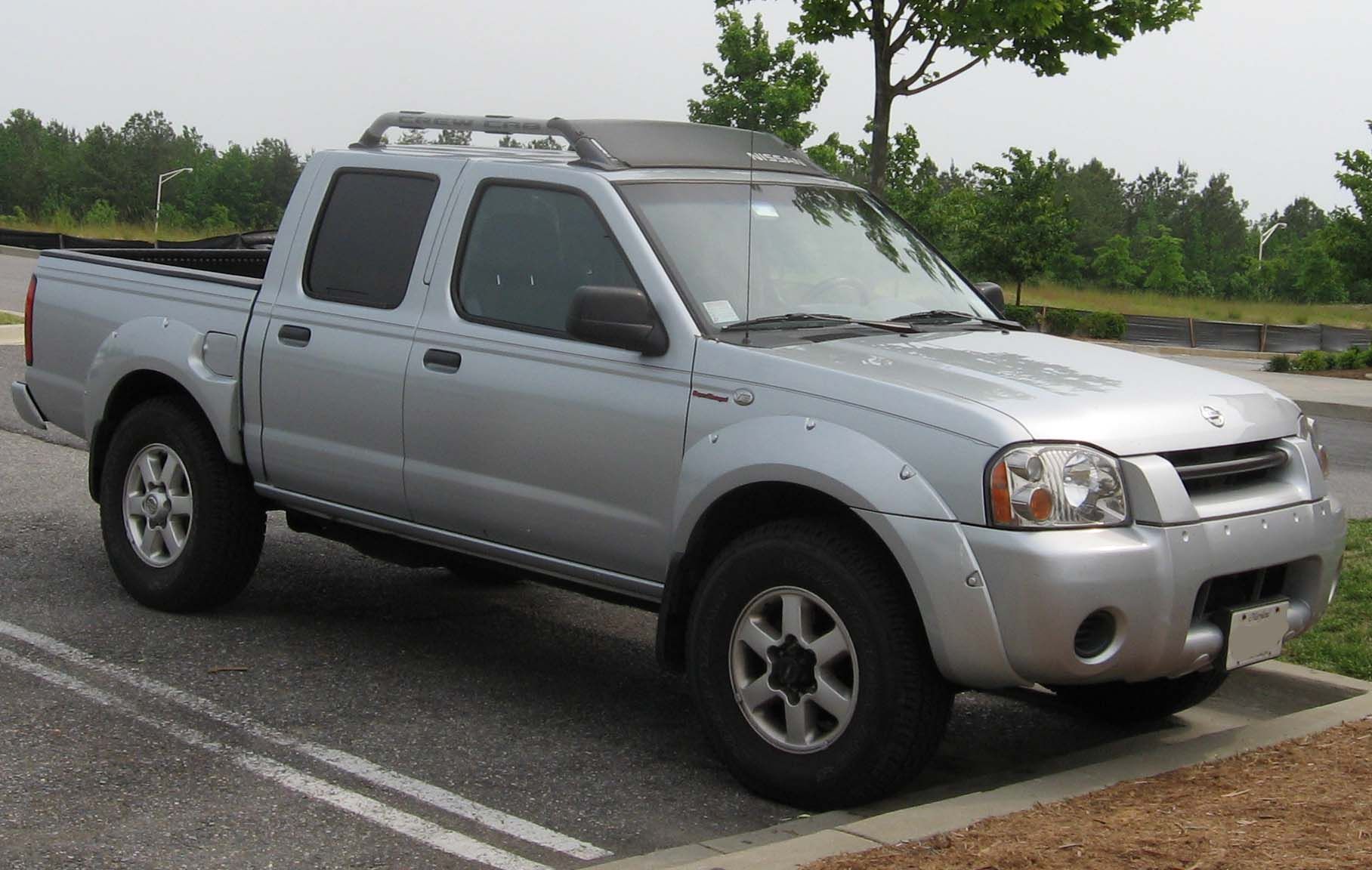
14. **Nissan Frontier** Moving from SUVs to trucks, we find another Nissan making our list of regrettable buys: the mid-size pickup truck, the Nissan Frontier. While it might look tough and capable, many owners have found themselves shaking their heads and quite possibly pounding their dashboards in frustration over the sheer volume of problems this truck presents. It’s a harsh reminder that not every workhorse lives up to its brawny image when it comes to long-term reliability.
The 2005 to 2010 model years of the Frontier are particularly notorious, thanks to a deeply flawed design that led to widespread transmission issues. The root cause was a truly baffling engineering oversight: the radiator, tasked with cooling the engine, had a nasty habit of leaking coolant directly into the transmissions. Yes, you read that right – coolant mixing with transmission fluid, a guaranteed recipe for disaster and premature component failure.
The consequences of this radiator-induced transmission calamity were exactly what you’d expect: gears slipping out of place, incredibly herky-jerky shifting that made driving a chore, and ultimately, catastrophic transmission failure that left owners with massive repair bills. As if these powertrain woes weren’t enough, owners also frequently reported frustrating engine issues and timing chain problems, adding insult to injury and ensuring that for many, the Nissan Frontier was a regretful purchase they’d rather forget.
Car Model Information: 2014 Nissan Frontier S
Categories: All set index articles, Articles with short description, Nissan vehicles, Set index articles on cars, Short description is different from Wikidata
Summary: The Nissan Frontier is a nameplate used on three different pickup truck models by Nissan:
Nissan Frontier (international), an alternative nameplate for the NP300/Navara on some markets
Nissan Frontier (North America), a rebadged NP300/Navara from 1997 to 2021, then became a separate model since 2021
Nissan Frontier Pro, a rebadged Dongfeng Z9 PHEV that will be available from 2025.
Get more information about: Nissan Frontier
Buying a high-performing used car >>>
Brand: Nissan Model: Frontier
Price: $13,435 Mileage: 131,197 mi.
Read more about: Steer Clear: 15 Vehicles Drivers Have Regretted Purchasing Most
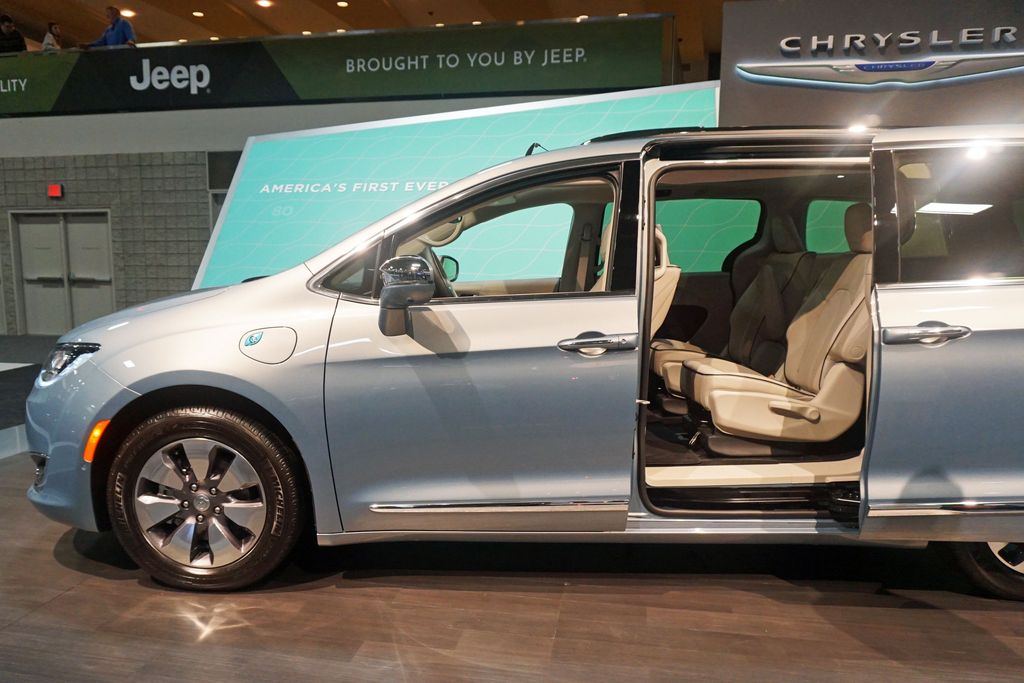
15. **Chrysler Pacifica Hybrid** Our final stop on this road to regret brings us to a minivan that promised a blend of family utility and modern efficiency: the Chrysler Pacifica Hybrid. On paper, a plug-in hybrid minivan sounds like a smart move, offering improved fuel economy and the environmental benefits of electric driving. But, as many owners have unfortunately discovered, the question quickly becomes: are these fuel savings enough to offset the persistent battery and electrical problems that plague this vehicle? According to a significant number of owners, the answer is a resounding “No.”
The very heart of its innovative powertrain—the battery and electrical system—has been a source of constant frustration. Owners frequently report issues such as unexplained battery drain, inconsistent all-electric range that rarely meets expectations, and, in some severe cases, complete battery failure. These problems directly undermine the core value proposition of a hybrid vehicle, turning what should be a benefit into a major liability and a consistent source of stress.
Adding to the hybrid woes are documented problems with the electric continuous variable transmission, another component critical to its performance and efficiency. When you combine these transmission issues with the recurring battery and electrical system faults, the list of potential headaches for Pacifica Hybrid owners truly does go on and on. For a vehicle designed to be a reliable and efficient family companion, these widespread issues have instead turned it into a prime example of buyer’s remorse, leaving owners wishing they had stuck to a simpler, more proven powertrain.
### Beyond the Dealership: The Deeper Data Behind Automotive Disappointment
So, we’ve just explored 15 specific vehicles that have left owners utterly regretting their purchases. This isn’t just about individual lemons; it’s a pervasive issue across the automotive market. A recent LendingTree survey reveals nearly 40% of consumers who bought a vehicle admit to having regrets, with that figure jumping to an alarming 47% for those who purchased in just the past year. The top regret, cited by 14% of owners, is wishing they’d chosen a different make or model, closely followed by buying an an unaffordably expensive car (10%) or neglecting to shop around for a better deal (8%).
Interestingly, regret often decreases with experience. Older generations, particularly baby boomers, show significantly less car-buying dissatisfaction (only 20% compared to 60% of Gen Zers), and long-term owners report fewer regrets. When remorse strikes, many owners do act: 75% of high-earners and 60% of men actively try to alleviate their regrets, often by selling the car or refinancing their loans. It’s not just the initial purchase that causes grief; over a third (34%) of consumers regret choices made *after* buying their vehicle, typically neglecting maintenance or ignoring minor issues until they become major, costly problems.
Adding to the burden, a significant 17% of all car owners currently struggle with payments, a figure that surges to 28% for millennials, high-earners, and recent buyers. Furthermore, a troubling one-third of Americans have been “underwater” on a car loan, owing more than the vehicle is worth. This is particularly prevalent among Gen Zers (40%), millennials (39%), and Gen Xers (37%), making it incredibly difficult to sell or trade-in without significant loss.
### Steering Clear of Remorse: Your Roadmap to a Better Buy
So, faced with this minefield of potential regrets, what’s a savvy car buyer to do? The path forward isn’t always easy, but you *can* take tangible steps to avoid that sinking feeling. First, resist impulse purchases and aggressive sales tactics. Take a breath, step back, and focus on what truly meets your personal needs, not just what catches your eye.
Your most powerful tool is thorough research. Dive deep into reliability ratings, scour owner reviews for common complaints, and critically assess resale values. This isn’t just about reading specs; it’s about understanding the real-world ownership experience. Don’t be swayed by marketing hype; look for solid data and the collective wisdom of those who’ve already driven these roads.
Car Model Information: 2024 Chevrolet Silverado 1500 RST
Name: Chrysler Pacifica (RU)
Manufacturer: Chrysler (automotive brand)
Aka: Chrysler Voyager,Chrysler Grand Caravan (Canada, 2021–present)
Production: 2016–present
ModelYears: 2017–present
Assembly: Windsor, Ontario
Designer: Irina Zavatski,Winnie Cheung (interior)
Class: Minivan
BodyStyle: 5-door minivan
Layout: Front-engine, front-wheel drive,Front-engine, all-wheel drive
Platform: Compact U.S. Wide platform
Related: Chrysler 200#Second generation (2014–)
Engine: Chrysler Pentastar engine#3.6L,FCA Global Medium Engine
Motor: 2x electric motors (SiEVT main motor & motor generator; PHEV)
Transmission: ZF 9HP transmission,automatic transmission,Continuously variable transmission
Drivetrain: PHEV
ElectricRange: cvt
Battery: val,lithium-ion battery
Wheelbase: 3089 mm
Abbr: on
Order: flip (hybrid)
Length: 203.6 in
Width: 79.6 in
Height: convert
Weight: {{convert,1964,kg,lb,abbr=on,order=flip
Predecessor: Chrysler minivans (RT)
Categories: 2010s cars, All-wheel-drive vehicles, Articles with short description, CS1 Spanish-language sources (es), Cars introduced in 2016
Summary: The Chrysler Pacifica is a minivan produced by the Chrysler division of Stellantis since the 2017 model year. Replacing the Chrysler Town & Country, the Pacifica is the sixth generation of Chrysler minivans, taking its name from the 2004–2008 product line. Along with serving as the first minivan with a plug-in hybrid drivetrain, the Pacifica has also served as a platform for autonomous vehicle development.
For the 2020 model year, Chrysler repackaged the lower-trim versions of the Pacifica as a revived Chrysler Voyager, largely to expand fleet sales of the model line; following the retirement of the Dodge Grand Caravan, the Chrysler Voyager was introduced in Canada for 2021 as the Chrysler Grand Caravan (moving the nameplate from Dodge to Chrysler after 36 years). Following the retirement of the Chrysler 300 sedan, the Pacifica/Voyager/Grand Caravan is currently the only vehicle marketed by Chrysler.
Chrysler has assembled the Pacifica minivan (and the Voyager/Grand Caravan) in its Windsor Assembly facility in Ontario (home to Chrysler minivan assembly since 1983).
Get more information about: Chrysler Pacifica (minivan)
Buying a high-performing used car >>>
Brand: Chrysler Model: Pacifica Hybrid
Price: $46,299 Mileage: 18,181 mi.
Read more about: Conquer the Open Road: 13 Hybrid Vehicles Delivering Over 600 Miles of Range for Unmatched Freedom
If you find yourself regretting a purchase, remember you have options. Talking to a peer can offer perspective, and for very recent buys, a polite conversation with the dealership manager *might* yield a solution. For serious issues, consumer protection offices or debt counselors offer invaluable assistance. Ultimately, by learning from others’ mistakes and doing your homework, you can steer clear of the “Road to Regret” and confidently drive off into the sunset with a car you truly love.

